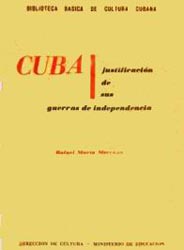3.4 Political and historical prose, its development in the period between 1868 and 1898

When the Ten Years’ War broke out on October 10, 1868, under the leadership of Carlos Manuel de Céspedes, political issues took center stage in the public sphere, and much of what was written during this period was motivated by such aspirations, sometimes framed within a carefully crafted aesthetic. In general, non-eminently political texts, whether related to any genre of fiction, also did not evade the social panorama and the conflicts inherent in the struggles for national independence.
Within the framework of the ideological confrontation, not only pro-independence texts emerged, but fundamentalism also found expression in literature, seeking to justify Spanish rule over the island. However, the very inconsistency of its postulates means that no notable text worthy of inclusion in national literature has emerged, beyond its ideological position, “anti-national” by definition.
Political journalism, as was the case with public speaking, discussed in another section, had its radiating center in the jungle, where the imperatives of the Spanish press law did not reach. Likewise, in the West, political literature of a more allusive nature flourished, but one that somehow managed to filter its ideas into the Cuban consciousness.
Important press outlets were founded in the emigration, garnering all kinds of support for the insurgent troops. Among them, “Patria,” founded by José Martí in New York in 1892, stands out. However, in Key West and other Cuban settlements, press outlets proliferated that contributed to keeping the independence ideal alive, from the beginning of the 1868 struggle, which also marked the exodus of thousands of Cubans. In Key West, the most important, and those that remained in the public eye for several years, were “El Republicano” and “El Yara.”
Another genre closely associated with the independence struggles was testimonial literature, which often took its starting point from campaign diaries in which military leaders and soldiers recorded their experiences. Naturally, this genre would emerge after the conclusion of the Ten Years’ War, with more historical than political value, as some texts would contain elements that were truly discouraging to the desire to resume the struggle.
The period of time between 1868 and 1898, the social upheavals that both wars involved – in addition to the Little War and, in general, the multiple conspiratorial and independence attempts – definitively contributed to the formation of the common identity of Cubans, nationality above territorial disputes, and all of this would have its expression in the concretion of a truly national literature, whose political aspect was both cause and effect of the clamor of the independence struggles and the feeling of nationality associated with them.








